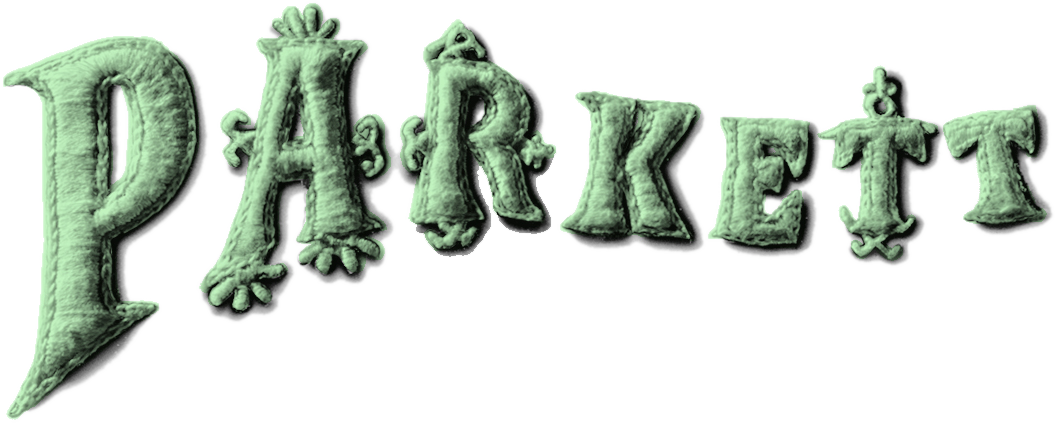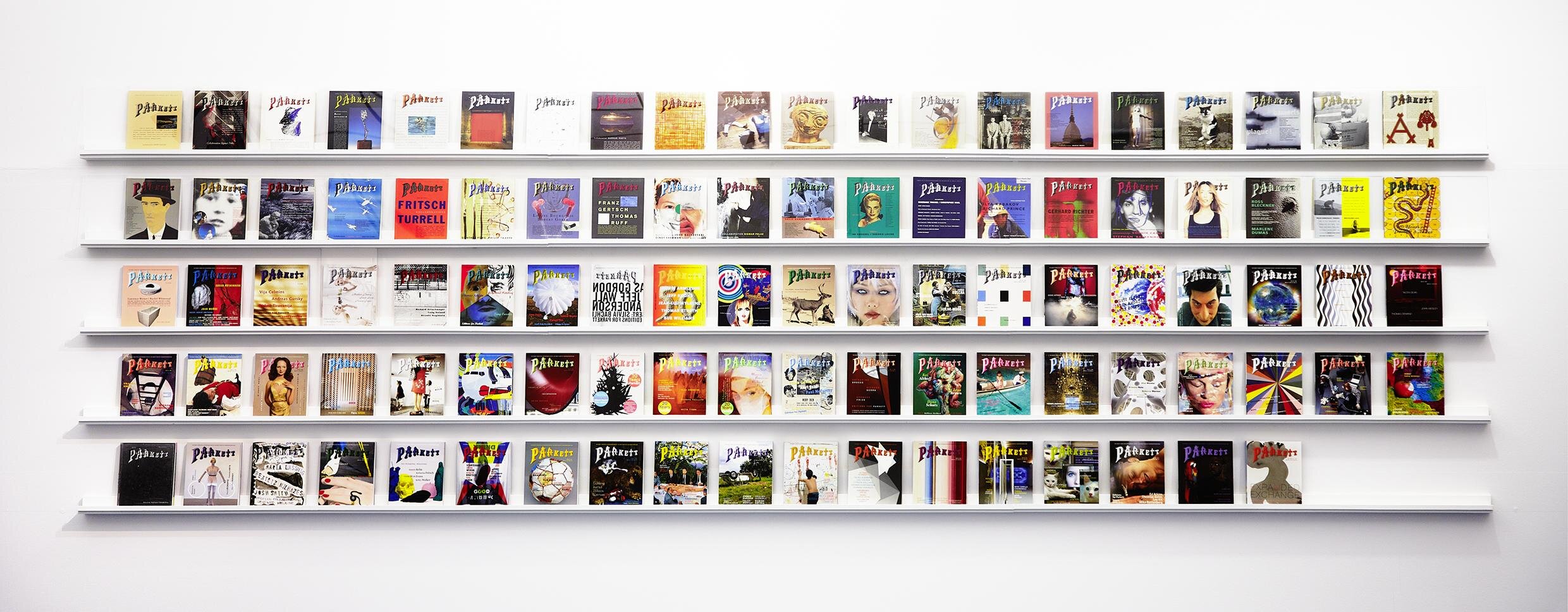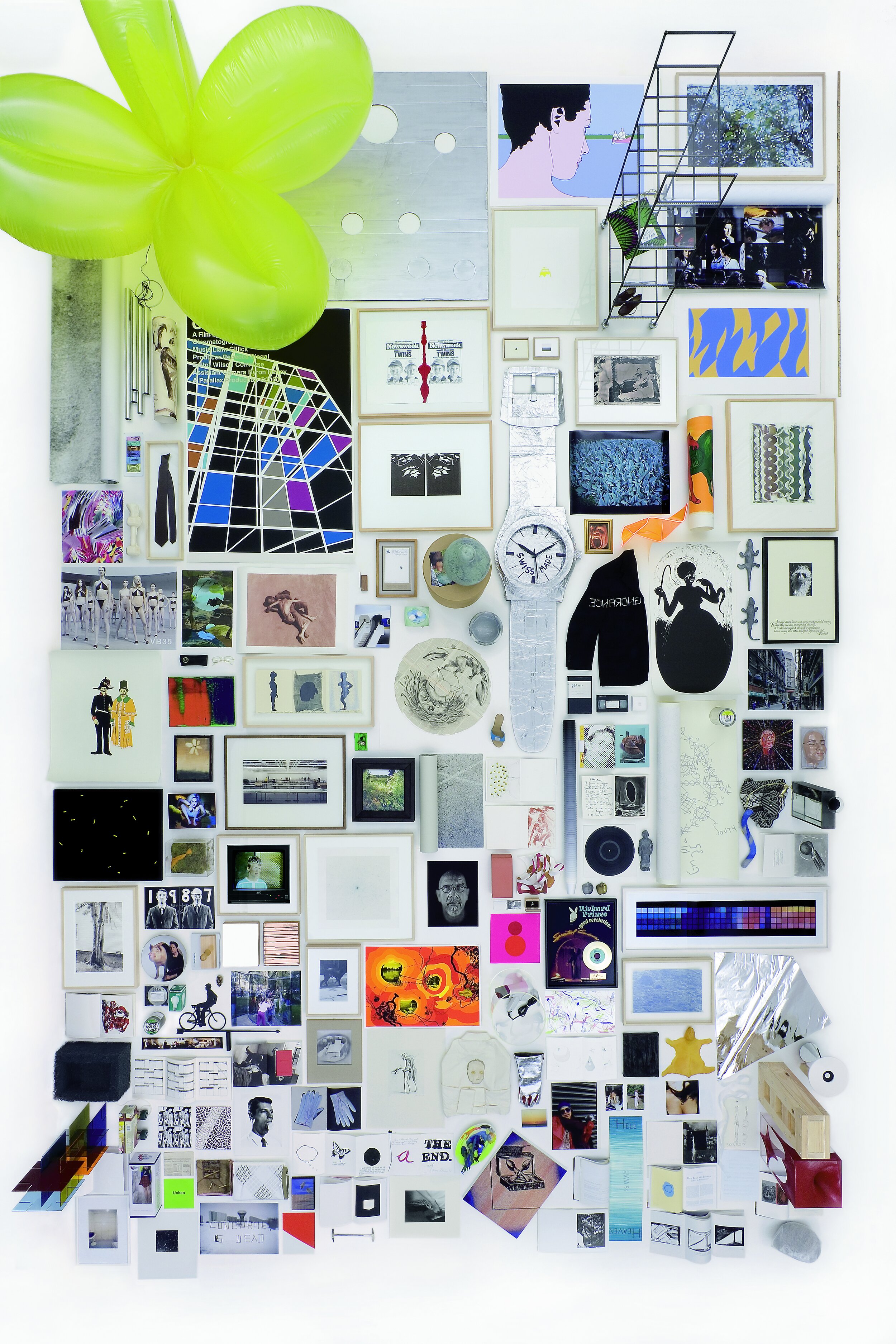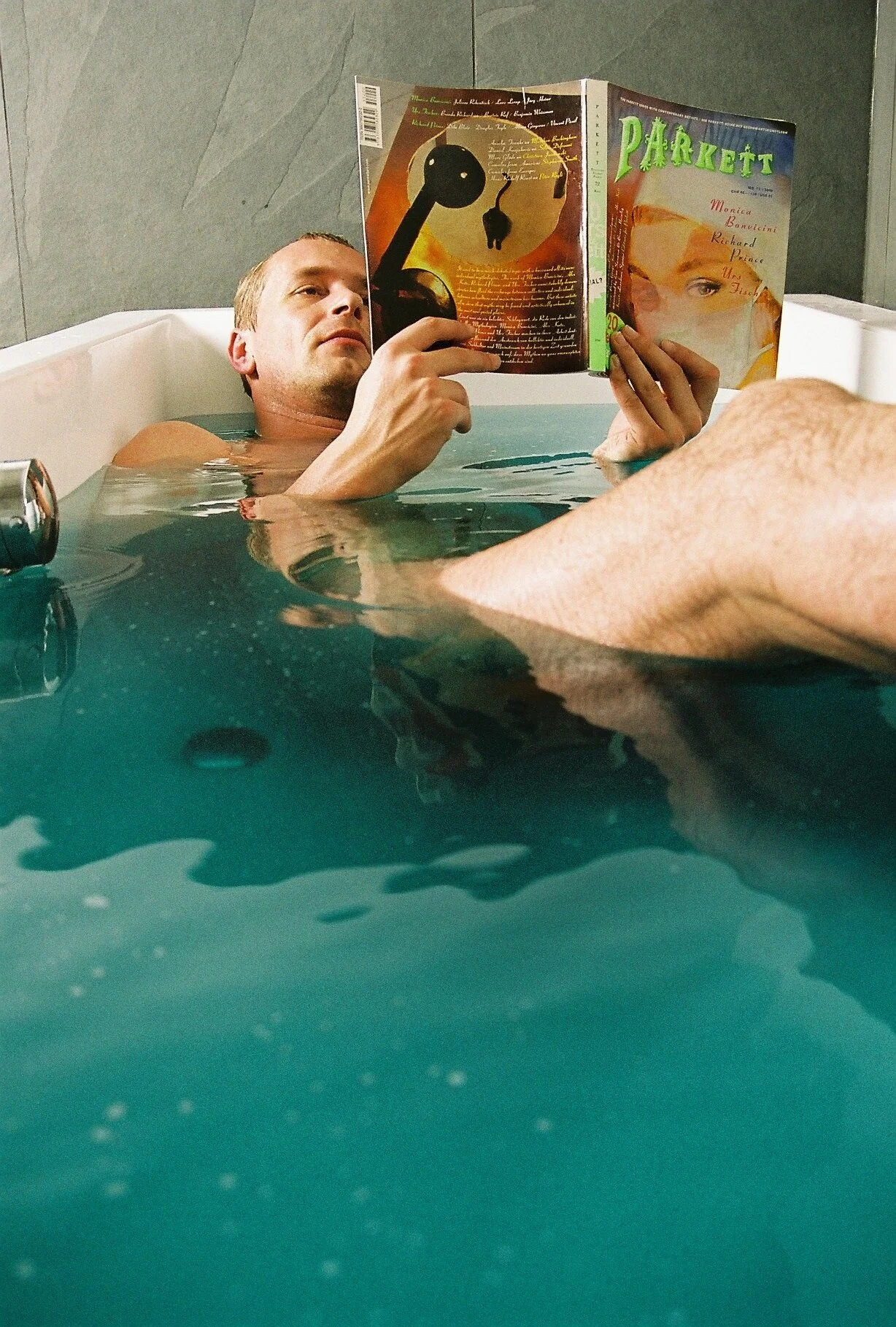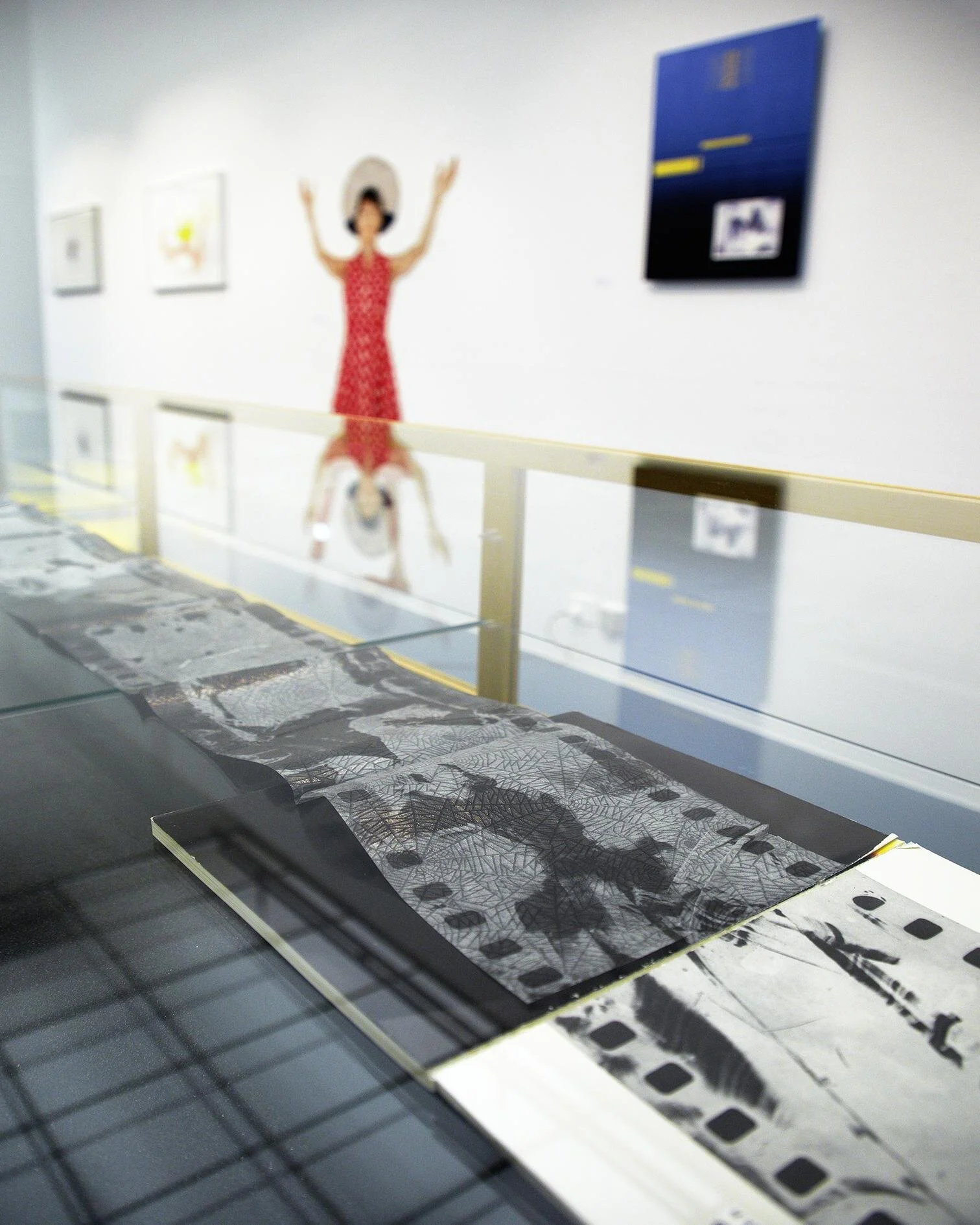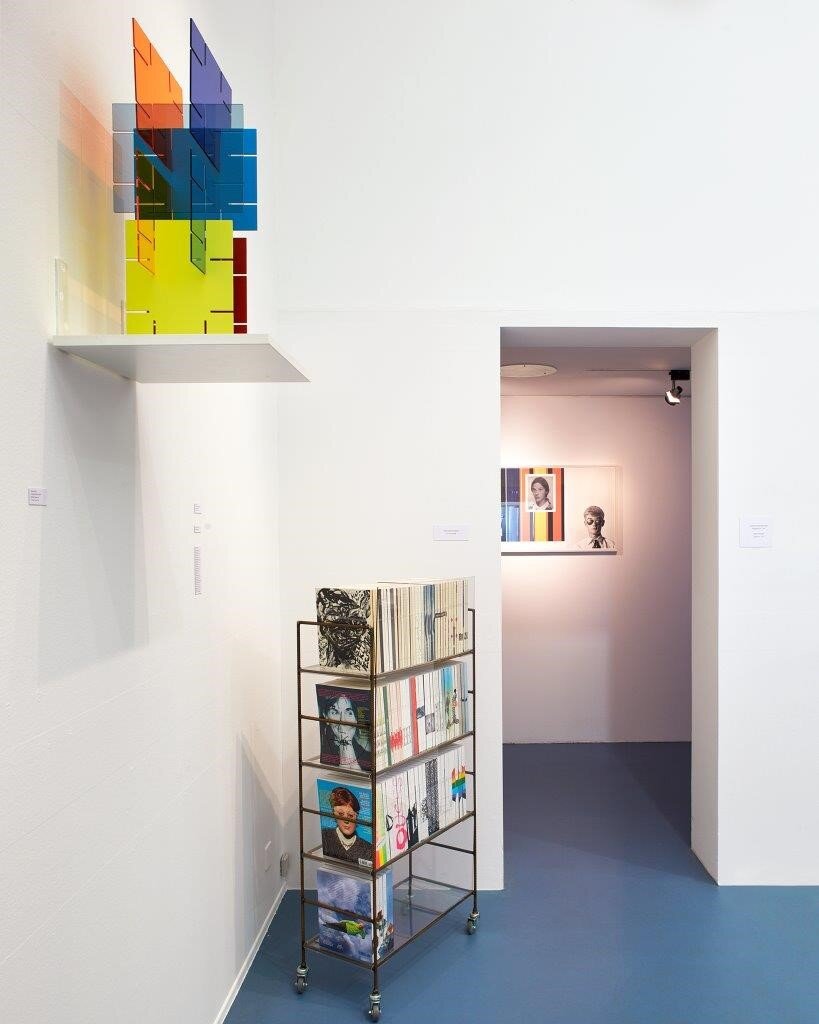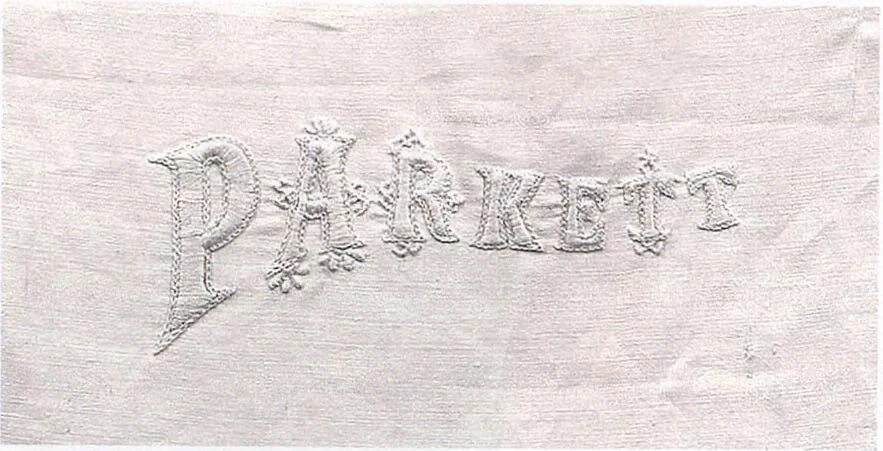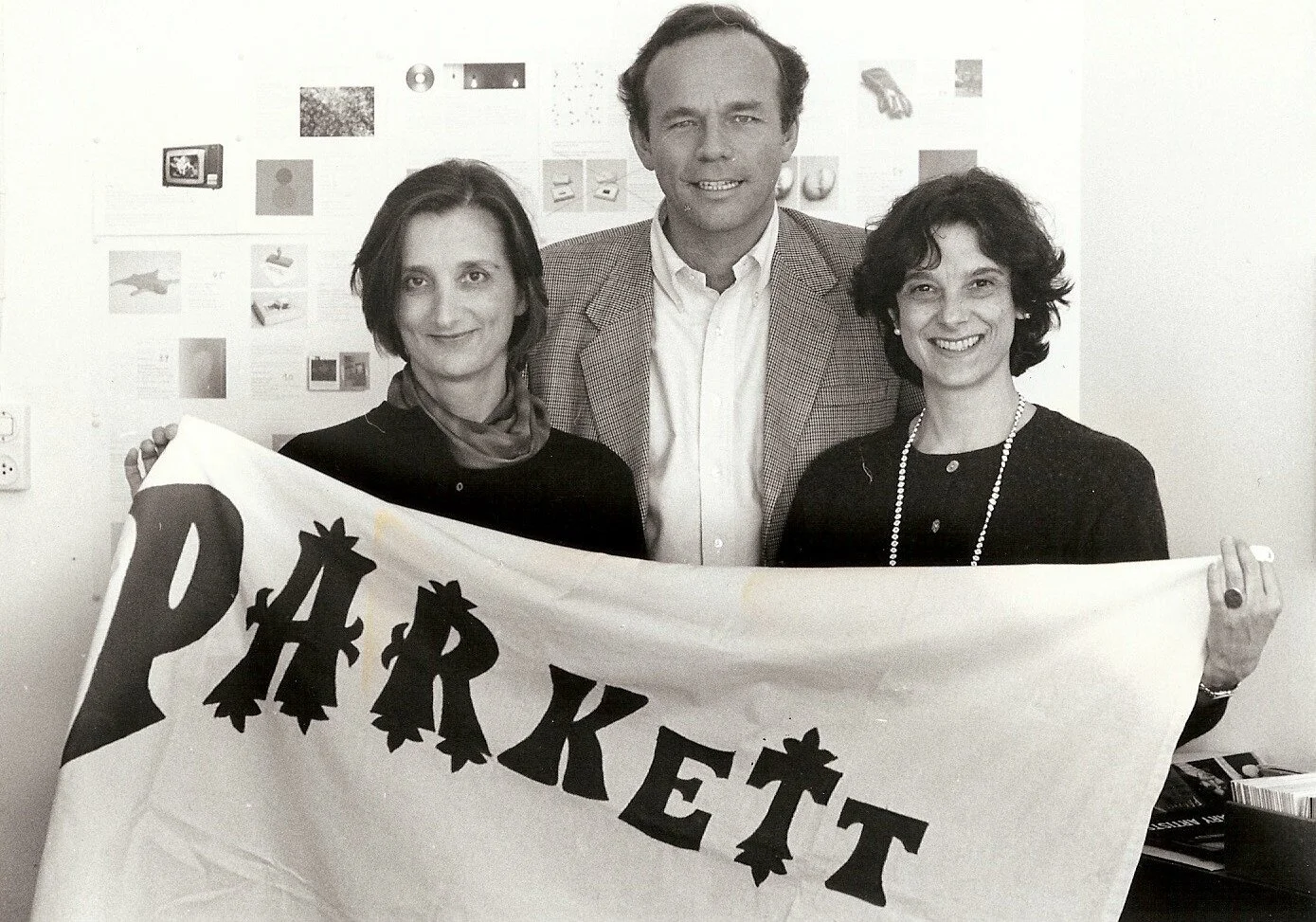About Parkett
A Small Museum & A Large Library
with Contemporary Artist Collaborations
A 33 Year Time Capsule & Platform to Explore over 300 Artists from around the World
Parkett provides a one-of-a-kind, one-stop survey and archive on and with contemporary artists from around the world. Its 101 publications were published from 1984 - 2017 and include direct collaborations with compelling contemporary artists. In total 270 artists’ portraits have been published, each comprising of three to five texts by renowned authors and curators. All collaborating artists also created an editioned artwork, whose form could take any shape; from prints, sculptures, installations, media works, to paintings and drawings.
Parkett discovers art from the inside out, it does not report on art from the outside in; each volume focuses on several of the world’s most inspiring artists, from El Anatsui to Andy Warhol, Louise Bourgeois, Cao Fei, Tracey Emin, Anish Kapoor, Yang Fudong, Gerhard Richter, Beatriz Milhazes, Danh Vo, Trisha Donnelly, Urs Fischer, Theaster Gates, and many more, who actively participated in creating the publication down to the selection of the visuals and the page layout.
With the closing print issue Vol. 100/101 (December 2017), Parkett continues to present its 33 year time capsule and archive on- and offline. This website features all books, editions, and more, and allows access to them for research, study and selected acquisition. Upcoming projects include a travelling museum retrospective, pop ups, rotating shows at Parkett’s exhibition space in Zurich and more.
Parkett’s books and artworks have been sought after by museums, readers, libraries and collectors worldwide. The 33 year time capsule has been presented in museums on three continents including MoMA/New York, Whitechapel Art Gallery/London, UCCA/Beijing, Kanazawa/Japan, Centre Pompidou/Paris, Kunsthaus/Zurich, SAC/Seoul and other venues.
Quotes on the Publication
“A source of inspiration, reflection, revelation and delight … the multi-perspectival approach to writing; the puzzle-book spines; the finger on the pulse choice of artists; and the alluring programme of editions: these are the ingredients that make Parkett one of the most influential forces in post war art…
Curators need to walk around an artist’s oeuvre and Parkett gives that 360 degree view … Bringing together a group of writers to focus on one artist’s work also reveals distinct genres in art criticism – the interview, the long form essay, the artist’s statement …”
Iwona Blazwick, Director, Whitechapel Art Gallery, London
“... a catalyst for invigorating change whilst always producing the harvest of the quiet eye”
Hans-Ulrich Obrist, Artistic Director, Serpentine Gallery, London
“... a concise survey of contemporary art.”
Deborah Wye, Chief Curator emer., Prints and illustrated Books, Museum of Modern Art , New York
“…the most stylish, serious art publication of recent decades.”
Robert Storr, curator (MoMA, NY, Venice Biennale et al.), Dean Yale School of Art
“It is rare to see pure acts of love in print but this is one of them. The world is a better place for Parkett.”
Lou Reed
"… no publication has had a more significant effect on me as an artist ..."
Rashid Johnson
“… an engine of artistic thought and practice …”
Philip Tinari, Director, Ullens Center for Contemporary Art, Beijing
“The best art publication by miles”
Time-Out, London
“…Parkett has included almost all the most important artists and critics in a quarter of the century… we hope that it will enlighten many more Chinese readers… How much we envy a medium that needs no attitude!”
Gong Yan, Editor-in-Chief, Art World Mag"azine & Director, Power Station Museum, Shanghai
“Congratulations on three decades of exceptional publishing.”
Sir Nicholas Serota, Director , Tate, London
“Parkett has taken the pulse of our time and built a “Schaulager” for it in book form: it has turned the present into a lasting phenomenon.”
Stanislaus von Moos, Prof. emer., University of Zurich
“Since its inception, Parkett has asserted itself as one of the best publications on contemporary art available today. It is one of those rare periodicals that does not resemble a magazine. The quality of its operations and topicality of its discussions combine to make Parkett both a luxurious and necessary publication.”
Centre Georges Pompidou, Paris
“Parkett is my favorite art magazine, the only one I look forward to reading, the only one I learn something from.”
Marilyn Minter
Quotes on Editions & Museum Exhibitions
“If asked to choose a favorite among Parkett’s artist editions over the past 33 years, my definitive answer would be 'All of them.' The individual editions are wonderful, but collectively they form an extraordinary research collection that charts a vast array of changes that have swept through the art world since the 1980s.
This includes not only the inevitable march of new and old ideas that always surrounds contemporary art, but also significant shifts in production: looking through the history of Parkett’s editions, one can study the impact of new technologies on artmaking, the increasing interconnectedness of artistic centers across the globe, and shifting ideas on the nature of the artistic multiple itself.
Artists have always challenged the producers of multiples to move into new areas of production, but Parkett really is a special case... the Parkett editions influence artists in ways that stretch far beyond exhibition and publishing, and this influence will likely continue well into the future.”
Glenn Phillips, Curator and Head of Modern & Contemporary Collections, Getty Research Institute, Santa Monica, California
“... a wonderland of sometimes fantastical treasures ... the scope and quality of what is on display, not to mention the artists involved … make this show one of the strongest so far this year”
Time-Out, Beijing, April, 2012
“The best art exhibition of the year impressed with its sheer range, diversity and depth.”
Straits Time, Singapore, Dec. 27, 2010
“If you want to see the entire forest, in terms of contemporary art, instead of looking at trees, this exhibition is a fitting choice. While blockbuster exhibitions usually focus on a single artist or group, the exhibition showcases 200 artworks by as many world-renowned artists ... offering a stunning wrap up of contemporary art at a glance.”
Korea Herald, Seoul, Dec 24, 2010
“A Collection to turn your hands inside out and your mind upside down … And with its innumerable possibilities, a stimulating array of objects, but also of critical views and study around some of the most crucial and controversial aspects of contemporary artistic practice … a powerful mix of poetics and politics, aesthetics and critique...”
Helena Cabello, Head of the Parkett Collection and Professor, Faculty of Fine Arts, University UCLM, Cuenca, Spain. Member of the artists’ group Cabello/Carceller.
“What makes these editions so remarkable, is the fact that the works have been created especially for Parkett with publisher and artist working in close cooperation to produce the Parkett “Collaborations”. A singularity of concept endows these pictures, objects, videos, and photographs .
One may look at them as something exceptionally ingenious, unusual, characteristic, or witty in reference to the artist, epoch, or particular medium. Collectors acquire Parkett Editions out of enjoyment and delight in collecting, for these works possess a highly personal appeal that merely enhances the impact of their zeitgeist.”
Reinhold Misselbeck, Curator, Ludwig Museum, Cologne, 1998
“The MoMA collection contains numerous examples of editions by the most significant artists of the modern period…. the editions made for PARKETT carry on this rich tradition.”
Deborah Wye, Chief Curator emer., Prints and illustrated Books, Museum of Modern Art , New York
“Commissioned by PARKETT, the most important artists of our time have created editions that represent the essence of their art or reveal an unexpected dimension. The works cover every possible medium including painting, photographs, drawings, prints, sculptures, videos, DVDs,and sound pieces.”
Iwona Blazwick, Director, The Whitechapel Art Gallery, London
“… the diversity of works on view offer a sense of what artists can do with the challenge of how to distill their practices into a single, compact object or image … in doing so the show goes beyond traditional notions of space, scale and scope, in ways both subversive and poetic.”
Philip Tinari, Director, Ullens Center for Contemporary Art, Beijing
“A show of the work produced for a revolutionary magazine functions as a mini-museum of the recent time.”
Financial Times, London, July 31, 2001
“… Parkett’s editions highlight the Zeitgeist, the hopes and fears of artists in the globalized world, their questions of identity, of past and future, their zest for life, and their creation of new utopias...”
NZZ (Neue Zürcher Zeitung), Zurich, May 7, 2001
The History of Parkett
From the Editorial of Vol. 100/101
by co-founders Bice Curiger, Dieter von Graffenried & Jacqueline Burckhardt
In 1984 a few friends, enthusiastic lovers of art with an affinity for the burgeoning transatlantic exchange between the art scenes in Europe and New York, came up with the idea of starting a “slow,” dual language publication. It would not function as a detached news and information magazine; it would become involved and take a clear-cut, committed stand instead of adhering blindly to conventional notions of magazine production. In-depth, close-up inquiry into the art world and artistic production—that was the declared objective of our journal and the artists would be our partners.
The name Parkett deliberately goes against the grain of conventional art publications. Parkett is the German word for parquetry, like the wooden floors that grace many exhibition venues. It is, in fact, a semantic goldmine in German, referring also to the theater seats that are closest to the stage, the public arena in general, and a dance floor. In French, le parquet stands for the State Attorney. What’s more, the word is easy to pronounce in a number of languages. Enzo Cucchi suggested that Mama Livia Curiger embroider the logo of Parkett on white linen. The idea appealed to us.
